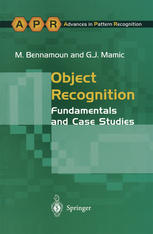

Most ebook files are in PDF format, so you can easily read them using various software such as Foxit Reader or directly on the Google Chrome browser.
Some ebook files are released by publishers in other formats such as .awz, .mobi, .epub, .fb2, etc. You may need to install specific software to read these formats on mobile/PC, such as Calibre.
Please read the tutorial at this link: https://ebookbell.com/faq
We offer FREE conversion to the popular formats you request; however, this may take some time. Therefore, right after payment, please email us, and we will try to provide the service as quickly as possible.
For some exceptional file formats or broken links (if any), please refrain from opening any disputes. Instead, email us first, and we will try to assist within a maximum of 6 hours.
EbookBell Team

4.7
96 reviewsAutomatie object recognition is a multidisciplinary research area using con cepts and tools from mathematics, computing, optics, psychology, pattern recognition, artificial intelligence and various other disciplines. The purpose of this research is to provide a set of coherent paradigms and algorithms for the purpose of designing systems that will ultimately emulate the functions performed by the Human Visual System (HVS). Hence, such systems should have the ability to recognise objects in two or three dimensions independently of their positions, orientations or scales in the image. The HVS is employed for tens of thousands of recognition events each day, ranging from navigation (through the recognition of landmarks or signs), right through to communication (through the recognition of characters or people themselves). Hence, the motivations behind the construction of recognition systems, which have the ability to function in the real world, is unquestionable and would serve industrial (e.g. quality control), military (e.g. automatie target recognition) and community needs (e.g. aiding the visually impaired). Scope, Content and Organisation of this Book This book provides a comprehensive, yet readable foundation to the field of object recognition from which research may be initiated or guided. It repre sents the culmination of research topics that I have either covered personally or in conjunction with my PhD students. These areas include image acqui sition, 3-D object reconstruction, object modelling, and the matching of ob jects, all of which are essential in the construction of an object recognition system.